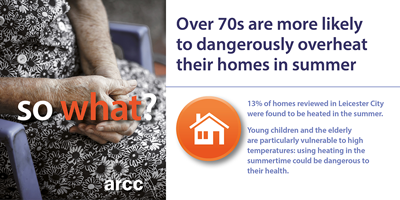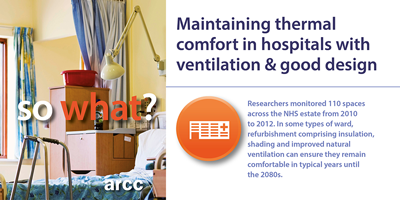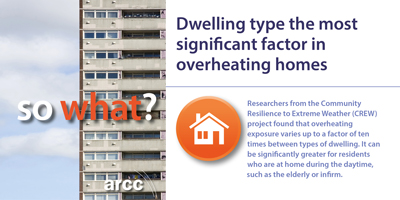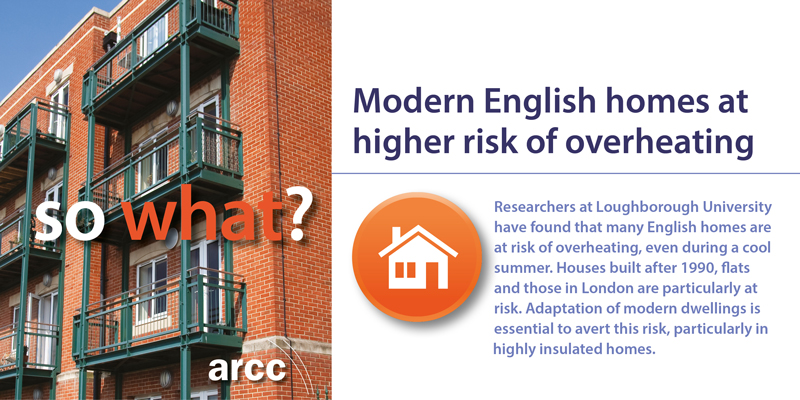Overheating
Maintaining a comfortable indoor temperature is vital to ensuring our general wellbeing and productivity. With heatwaves expected to occur in most summers by the 2050s, we face significant risks to our health and comfort.
External temperatures can be intensified by the urban heat island effect – increasing heat emissions from energy use in homes, industry, business and transport networks, and reduced air movement around buildings.
The location, fabric, orientation and use of a building all contribute to the risk of overheating. Highly insulated lightweight buildings and those with heavily glazed facades are already vulnerable to high temperatures, but many other types will become uncomfortable places to live and work in the future.
The Climate Change Risk Assessment (CCRA) 2017 highlighted the future risks of overheating in hospitals, care homes, schools and offices, and commented that there are no current policies to adapt homes or other buildings to higher temperatures. See the CCRA 2017 People and the built environment chapter.
ARCC outputs
- Adapting UK homes – policy & practice: a summary of research, written for decision-makers, highlighting the latest results and implications for end users.
- Overheating in homes – practical advice: identifies homes at risk of overheating and suggests measures to help cool buildings.
Research projects
- ARCADIA – assessing the impact of potential overheating on urban resilience (focused on London).
- CREW – adapting UK dwellings; a tool to assist when choosing retrofit adaptations for specific building types to reduce overheating.
- SNACC – developing a portfolio of adaptation strategies for suburbs including building-level interventions and broader strategies such as green landscaping to cool the environment.
- DeDeRHECC – identifying viable strategies to reduce the risk of summer overheating in hospital buildings thereby safeguarding patient care.
- PROMETHEUS, PROCLIMATION, COPSE, Low Carbon Futures – a suite of projects looking at modelling the future thermal and energy-use performance of buildings using the latest climate projections.
- LUCID – helped to understand the impact of local urban climate on energy use, comfort and health with the emphasis on London.
- SCORCHIO – developed prototype tools to help planners to adapt urban areas, with a particular emphasis on heat and human comfort.
- LoHCool – investigating and developing strategies to reduce CO2 emissions from space heating and cooling in typical urban buildings, working in China and the UK.





